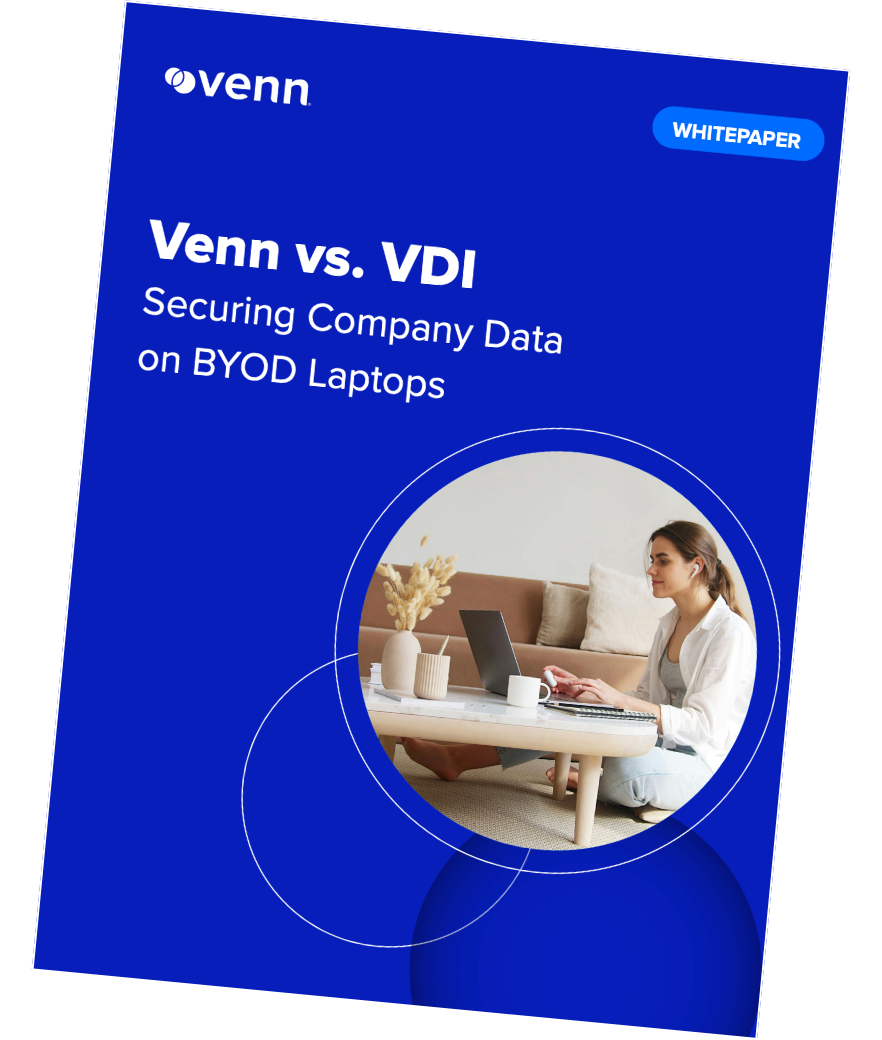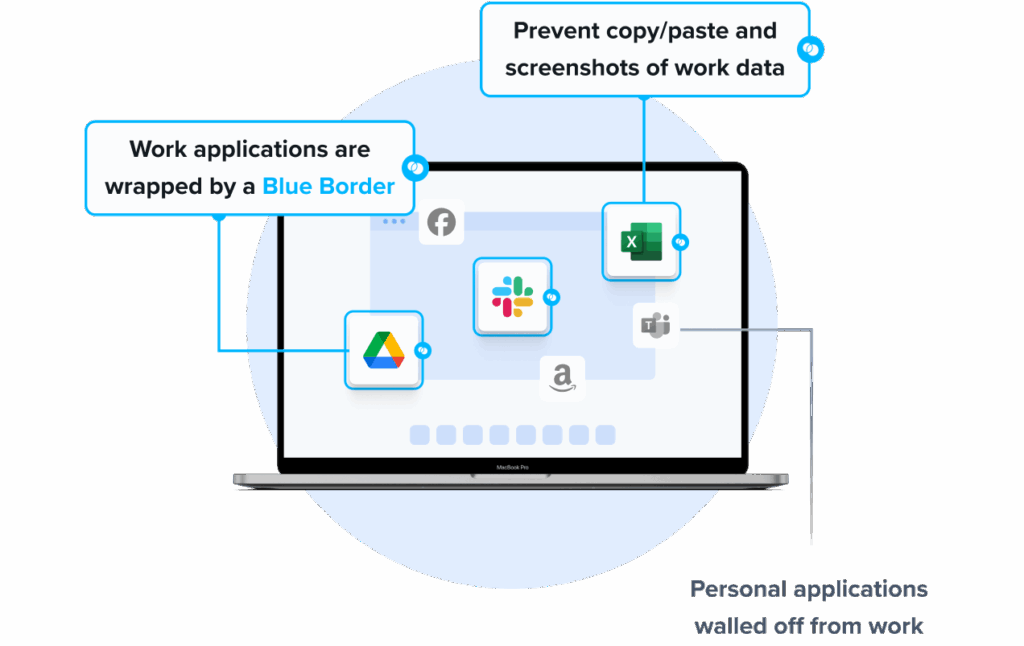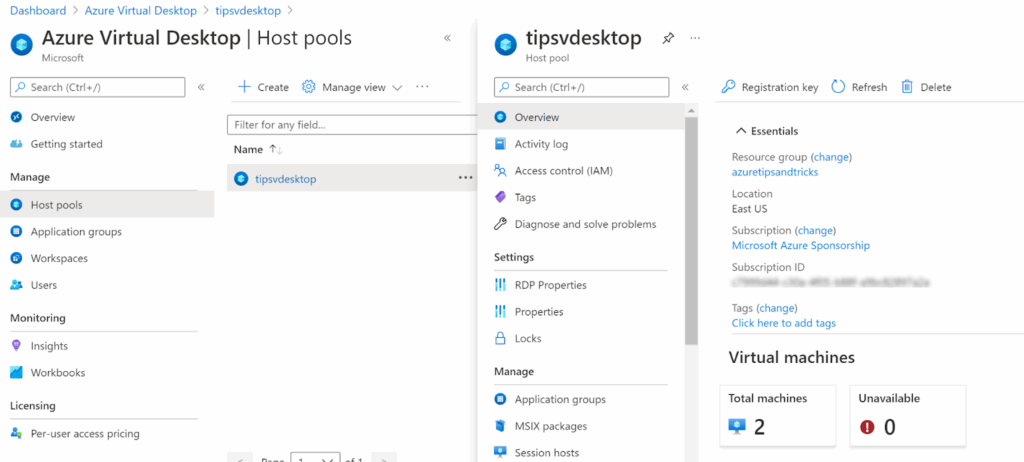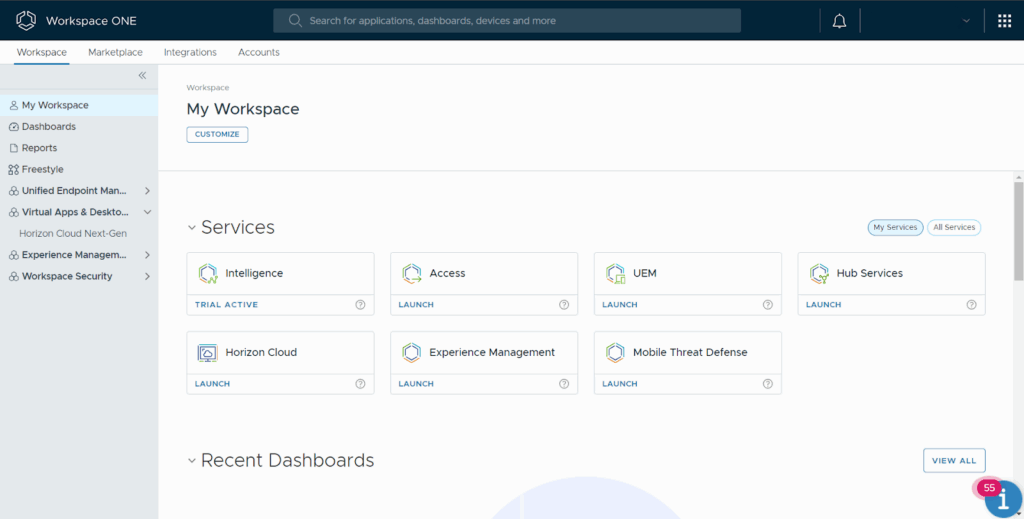Citrix VDI (Citrix DaaS): Key Features, Pros/Cons, and Alternatives

What Is Citrix VDI (Citrix DaaS)?
The primary Citrix VDI offering is called Citrix DaaS (formerly Citrix Virtual Apps and Desktops). It is a technology that allows users to access desktop environments and applications from various devices through a centralized server. The Citrix DaaS solution allows users to use a desktop remotely, from PCs, tablets, smartphones, and thin clients.
VDI (Virtual Desktop Infrastructure) or DaaS (Desktop as a Service) involves running desktop operating systems and applications within virtual machines (VMs) on a server. In VDI, this server is deployed on-premises, and in DaaS it is deployed in the cloud. Users connect to these VMs from their devices, accessing their virtual desktops and applications. Increasingly, VDI/DaaS is considered a legacy technology, because of its cost and complexity for organizations, and the challenges users often experience due to remote desktop latency.
Key benefits of Citrix VDI (Citrix DaaS) include:
- Centralized management: IT administrators can manage and update virtual desktops from a central location
- Secure remote access: Because desktops are centrally managed, organizations can ensure they are secure, prevent unsafe activity, and prevent breaches on user devices.
- Cost savings: Citrix DaaS is often cheaper than providing corporate workstations to all users. However, it is far more expensive than Bring Your Own Device (BYOD) programs, where users work on their own devices without a central VDI/DaaS system.
- Scalability: Citrix DaaS solutions can be scaled to support thousands of employees. However, this often requires complex implementation and investment in expensive hardware or cloud resources.
In this article:
Key Features of Citrix DaaS
Citrix DaaS provides IT teams with tools to centralize, secure, and control desktops and applications from one platform. It supports both cloud and on-premises deployments, allowing organizations to run in hybrid environments.
Key capabilities include:
- Centralized management: Administrators can manage apps and desktops from a single console, reducing the need for distributed infrastructure.
- Security controls: The platform includes features to secure unmanaged endpoints, apply access policies, record sessions, and monitor activity with analytics. These measures help limit data exposure and improve auditing.
- Hybrid and multi-cloud deployment: Citrix DaaS can run workloads in public clouds like Azure, Google Cloud, and AWS, while still integrating with on-premises systems. This lets organizations mix and move workloads as needed.
- User lifecycle management: IT teams can rapidly provision desktops and applications for new employees and revoke access when users leave, supporting smoother onboarding and offboarding.
Components and Services Managed by Citrix DaaS
Citrix DaaS hosts and manages key infrastructure components in Citrix Cloud, reducing the need for organizations to deploy and maintain them locally. Core services include:
- Delivery controllers: Handle load balancing, user authentication, and session brokering directly from the cloud, removing the need to install and manage on-premises controllers.
- Databases: Store site configuration, monitoring data, and configuration logs in Citrix Cloud, eliminating the requirement for a customer-managed SQL database.
- Licensing: Manage license allocation and usage tracking centrally.
- Studio: A web-based console for configuring, provisioning, and monitoring DaaS deployments. It supports both full configuration workflows and Quick Deploy for rapid setup across hosting providers such as Azure, AWS, Google Cloud, and Windows 365.
- Monitor: A monitoring console for real-time session data, historical performance metrics, and HDX traffic analysis, helping IT teams troubleshoot and resolve issues proactively.
- Cloud connectors: Act as secure communication bridges between Citrix Cloud and resource locations. These are installed in each location to enable policy enforcement, session brokering, and provisioning, with Citrix managing updates.
Customers are responsible for managing certain components that integrate with Citrix DaaS:
- Citrix Gateway: Provides secure TLS connections for remote access, either through a Citrix-managed service or a customer-deployed virtual appliance.
- Active Directory and identity providers: Authenticate and authorize users. Supported IdPs include on-premises Active Directory, Azure AD, Okta, and Citrix Gateway.
- Virtual delivery agents (VDAs): Installed on physical or virtual machines to deliver desktops and applications. VDAs register through Cloud Connectors and apply session policies.
- Hypervisors and cloud services: Host virtual workloads using platforms such as VMware vSphere, Microsoft Hyper-V, Nutanix AHV, or public clouds.
- StoreFront (optional): Customer-managed StoreFront servers can be deployed for local access or to support resilience during network outages.
Limitations and Challenges of Citrix DaaS
Citrix DaaS comes with significant limitations that impact both organizations and end users. Performance, integration, and cost considerations are among the most common concerns for organizations evaluating or operating the platform. These limitations were reported by users on the G2 platform:
- Performance issues: Users may experience latency, slow responsiveness, or disconnections, particularly during screen sharing, video conferencing, or high-load periods.
- High dependency on network quality: Requires strong and stable internet connectivity for smooth operation, especially when running high-resolution or resource-intensive applications.
- Integration gaps: Vendor integrations with platforms such as VMware, Azure, and certain Linux-based environments are not always seamless.
- HDX optimization limitations: Audio and video performance in applications like Microsoft Teams can be suboptimal inside the virtual desktop.
- Not ideal for small businesses: Subscription and infrastructure costs can be prohibitive for smaller organizations with limited budgets.
- Higher costs compared to alternatives: Ongoing subscription fees are often higher than on-premises Citrix VDI or VMware Horizon, and capital expenditure can rise significantly for private cloud or on-premises deployments.
- Frequent upgrades: Rapid release cycles can make it challenging for large enterprises to keep up with updates without straining resources.
- Infrastructure and resource scaling challenges: Increasing backend capacity, applying patches, or adjusting resources may require significant effort.
- Client application stability: The thick client may disconnect or produce errors, requiring time-consuming restarts; the thin client generally performs better.
- User experience friction: Changes in product branding and interface over time can cause confusion, and using multiple desktops simultaneously can be cumbersome.
- Storage and session management issues: Occasional storage problems and limitations in session password management have been reported.
Break Free from Citrix VDI’s Limitations
Discover how Venn enables secure BYOD access without the complexity, cost, and latency of Citrix VDI.

Notable Citrix VDI Alternatives
In light of these limitations, many organizations are seeking alternatives to Citrix VDI technology. Here are a few popular options.
1. Venn

Venn’s Blue Border was purpose-built to protect company data and applications on BYOD computers used by contractors and remote employees without VDI.
Similar to an MDM solution but for laptops, work lives in a company-controlled Secure Enclave installed on the user’s PC or Mac, where all data is encrypted and access is managed. Work applications run locally within the Enclave – visually indicated by Venn’s Blue Border™ – protecting and isolating business activity while ensuring end-user privacy.
With Venn, you can eliminate the burden of purchasing and securing laptops and managing virtual desktops (VDI.) Unlike virtual desktops, Venn keeps users working locally on natively installed applications without latency – all while extending corporate firewall protection to business activity only.
Key features include:
- Secure Enclave technology: Encrypts and isolates work data on personal Mac or PC computers, both for browser-based and local applications.
- Zero trust architecture: Uses a zero trust approach to secure company data, limiting access based on validation of devices and users.
- Visual separation via Blue Border: Visual cue that distinguishes work vs. personal sessions for users.
- Supports turnkey compliance: Using Venn helps companies maintain compliance on unmanaged Macs with a range of regulatory mandates, including HIPAA, PCI, SOC, SEC, FINRA and more.
- Granular, customizable restrictions: IT teams can define restrictions for copy/paste, download, upload, screenshots, watermarks, and DLP per user.

2. Amazon WorkSpaces

Amazon WorkSpaces is a managed desktop virtualization service that delivers persistent or non-persistent cloud-based desktops to users. It supports multiple operating systems, including Microsoft Windows, Amazon Linux 2, Ubuntu Linux, Rocky Linux, and Red Hat Enterprise Linux. By hosting desktops in AWS, it removes the need to purchase hardware or manage desktop infrastructure.
Key features include:
- Two deployment models: WorkSpaces Personal for persistent, user-specific desktops, and WorkSpaces Pool for non-persistent desktops hosted on ephemeral infrastructure.
- Flexible setup options: Choose from multiple hardware and software configurations, AWS Regions, and custom images or bundles.
- Licensing and applications: Bring your own Windows licenses and applications or purchase software from AWS Marketplace.
- Microsoft integration: Join Windows WorkSpaces to Microsoft Entra ID for single sign-on to Microsoft 365, and manage with Intune.
- Protocol choice: Select between PCoIP and DCV protocols for desktop streaming.

Source: Amazon
3. Azure Virtual Desktop

Azure Virtual Desktop (AVD) is Microsoft’s cloud-based service for delivering virtual desktops and applications through Azure. It supports Windows 11, Windows 10, and Windows Server, with single-session and multi-session capabilities. Organizations can provide either full desktop environments or specific applications via RemoteApp.
Key features include:
- Windows multi-session capability: Exclusive to AVD for Windows 11 and Windows 10 Enterprise, enabling multiple users per VM to reduce costs while maintaining performance.
- Flexible delivery options: Publish full desktops or individual applications through RemoteApp from a single host pool.
- Hybrid and on-premises support: Run workloads in Azure or extend to on-premises infrastructure with Azure Local.
- Custom and prebuilt images: Bring your own VM images or select from the Azure Gallery for rapid deployment.
- Autoscaling: Automatically adjust session host capacity based on demand, time, or day to optimize cost efficiency.

Source: Microsoft
4. Omnissa Horizon Cloud

Omnissa Horizon Cloud is a hybrid desktop-as-a-service (DaaS) platform to modernize the delivery of virtual desktops and applications. It uses a cloud-native, pod-less architecture to reduce infrastructure overhead, improve stability, and speed up deployment. It centralizes management in the Horizon Control Plane and supports multi-cloud and hybrid hosting.
Key features include:
- Horizon Edge: Deploys a thin edge gateway instead of full pods, reducing infrastructure footprint and simplifying setup.
- Pod-less architecture: Moves management components into the Horizon Control Plane for faster deployment and higher stability.
- Automation: API-driven design enables integration with external tools and workflows for custom automation.
- Multi-cloud management: Single, cloud-based interface for managing on-premises, hybrid, and multi-cloud environments.
- Scalable design: Expands capacity to meet changing workforce demands.

Source: Omnissa
5. Inuvika OVD Enterprise

Inuvika OVD Enterprise is a Linux-based virtual desktop and application delivery platform intended as a cost-effective alternative to Citrix and VMware (Omnissa) Horizon. It delivers Windows and Linux applications, as well as virtual desktops, to devices through the organization’s chosen hypervisor or cloud platform.
Key features include:
- Cross-platform delivery: Provide Windows and Linux applications or desktops to any endpoint via web portal, shared desktop, or integrated into the local desktop.
- Hypervisor and cloud agnostic: Works with vSphere, KVM, Hyper-V, ProxmoxVE, VergeOS, Nutanix AHV, and deploys to AWS, Azure, GCP, or private clouds.
- Linux Foundation efficiency: Increases user density per server and reduces Windows Server license requirements.
- Integrated secure gateway: Eliminates the need for separate appliances like Citrix NetScaler, with all data encrypted end-to-end.
- Zero trust security model: Granular access controls, built-in MFA, and support for Duo and any SAML2 provider (e.g., Okta, Entra ID).

Source: Inuvika
Conclusion
VDI and DaaS platforms such as Citrix DaaS, Amazon WorkSpaces, and Azure Virtual Desktop were built to centralize desktop delivery, but the model carries persistent flaws. High infrastructure costs, poor user experience under weak network conditions, and complex integrations limit the value for many organizations. Even with managed cloud services, IT teams still face heavy overhead in configuration, monitoring, and troubleshooting.
As a result, many organizations are not only comparing Citrix against direct competitors, but also reevaluating whether VDI/DaaS is the right approach at all. Lightweight endpoint management, secure SaaS adoption, and zero-trust remote access models are increasingly preferred over maintaining large-scale virtual desktop infrastructures. Instead of extending the life of VDI, enterprises are looking for ways to move beyond it.